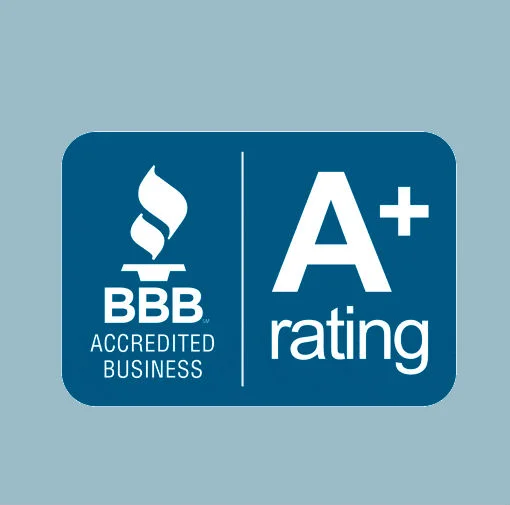Medical Office Space: How to Choose a Great Location (First in a Series)
 Editor's note: This article is the first of a two-part series and covers how to CHOOSE a new practice location from a marketing point of view. At the conclusion of this article, we'll provide you a link to the second article, which covers how to PROMOTE your new location.
Editor's note: This article is the first of a two-part series and covers how to CHOOSE a new practice location from a marketing point of view. At the conclusion of this article, we'll provide you a link to the second article, which covers how to PROMOTE your new location.
"Location, location, location..." This wise old real estate adage does not just apply to buying a new house, but is also relevant to healthcare professionals looking to either move or open a new office. Whether you are relocating your practice to a new state or even a few blocks away from your current office, choosing the right location is vital to the overall success of your practice.
Competition
In the old days, a Marcus Welby might just "put up a shingle" and start seeing patients. Nowadays, there's a Dr. Welby on every street corner and in every mini-mall. How do you position yourself so that patients come to you?
A little known secret is to check the population-to-professional ratio for the specific areas in which you are interested. Obviously, the lower the number of professionals, the less the competition. But where are your competitors located? How aggressive is their marketing? What kinds of marketing do they do? Is it effective?
This simple analysis may open up some overlooked and exciting opportunities for you. Professionals often overpopulate upscale areas, while never considering the huge opportunities that exist a few miles away in middle and even lower income neighborhoods. Speaking of which...
Demographics
Research population statistics and determine whether the region of your choice makes sense for your practice. Given your profession and specialty, do you want to target men, women, young or old, blue or white collar?
Also consider whether or not the population is growing or declining - it is usually easier to break into newer communities than mature communities where you would have to take patients away from practitioners who have been in the area many years.
If you own an elective or cosmetic practice, you should also consider education and income levels, though be careful about the assumptions you make. For example, we know many highly successful plastic surgeons quietly performing impressive volumes of breast enhancement and liposuction surgeries in low-income neighborhoods that their competitors completely overlook. In contrast, facelifts are purchased solely by upscale women over 50.
Give yourself a minimum of at least three regions to explore. You can get very detailed demographic research online, sometimes free; sometimes you have to pay a service. The US Census Bureau has a site, http://www.census.gov/ that frankly has too much information for most people, though if you are willing to work, it is a treasure trove of information.
You can also contact the newspapers, Chambers of Commerce and local city and state governments in each region. They often have demographics information provided on their websites. These reports will tell you about household incomes, age distribution, blue collar vs. white collar, race and ethnicity, education, etc. Map these by areas in the cities or towns you are considering, then determine which are growing or shrinking. Obviously, you want to stay away from the dying communities.
If you are really serious about demographics, a fascinating book you should buy and read is "The Clustered World: How We Live, What We Buy, and What It All Means About Who We Are" by Michael J. Weiss. This book explains in detail how marketers model the US (and other countries) into 62 or so "clusters" of consumers. When you buy the book, it will also give you access to a special web site loaded with demographic data on every zip code in the USA.
Traffic Patterns
What are the major thoroughfares for business commuters within a five-mile radius for your area? Where are popular businesses, such as supermarkets and banks? The more popular businesses attract more potential clients. Also, upscale businesses attract upscale clients - think Starbucks.
One issue many professionals don't even consider is traffic patterns. This takes some research. Go the city records for existing traffic counts past the sites you're studying. Or go out yourself and, literally, count the cars going down your street per hour, morning and afternoon. As a rule of thumb, 40,000 cars a day or more are considered a retail location, though some rural towns don't have 40,000 all together. Also, remember that while we all hate traffic, the slower things are, the higher the visibility.
Something else you can consider is what side of the street is most convenient to your customer. If most of your patients make appointments after work and rush hour traffic is heavier going west, that's the side you choose. It's more convenient to a customer to turn right into a building's driveway than to turn left or make a U-turn.
Signage
If your practice is consumer-direct, signage is crucial. So once you've narrowed your choice to one or two locations, check local regulations on outside office signs. Are there signage restrictions enforced by the landlord? If your customers can't see you from the street, you may as well be invisible, so consider your sign's visibility. Are there already too many signs cluttering the street so yours won't stand out?
More things to consider
Make sure you study at least five to ten sites in your targeted area. Consider the following:
- If you rely heavily on insurance, consider the employers in the area. Advanced marketers often work to get an "in" with large local employers who offer favorable insurances to their employees. (But that is a subject for another article).
- Does the building provide enough square footage (maybe even expansion possibilities if that's your overall goal)?
- Does your potential location have well-lit, convenient parking for your patients? (Their number one complaint, by the way.)
- What is the image of the building, and how does it look? Some landlords take great pride in keeping their building clean and modern, while others simply let it go to save money. Ask tenants about this BEFORE you move in.
- Consider hospital proximity. Beyond the obvious convenience of locating close to the hospital, you also will benefit from the patient perception that you are located in a recognized healthcare area.
- If you are a specialist, it often helps to locate in a major medical building in close proximity to large, referring practices. One landlord we know actually goes out of her way to help tenants be successful by introducing them to each other. If you go this route, remember that ground floors are best, because 100% of the traffic will go right by your doorstep.
- Most consumer direct practices (e.g., family practice, general dentistry, etc.) can benefit greatly from being visible, and generally should avoid medical buildings. Instead, consumer direct practices should generally choose either freestanding buildings (with signage and street frontage) or even retail center locations.
- If you choose a retail location (strip center or mall), the better your visibility, the more you will pay. Keep in mind that the extra rent you are paying is simply a marketing expense, which you can and should evaluate on a return on investment basis.
- You should talk to your accountant about the relative advantages of owning versus leasing your office space. Beyond the obvious tax and income issues, make sure you consider the tradeoff between long term investment potential versus short term cash flow, flexibility versus hassle factors, your own personality, etc.
- Finally, make sure you use common sense here. No kidding, a podiatrist once called us in desperation after relocating to the second floor of an office building which didn't have an elevator. (Even we can't help someone like that.)
Conclusion
There are many issues and criteria to consider when choosing a new location. Even the best practitioners fail because of poor choice. Take the time to do your homework and the results will offer huge potential.
By the way, you may want to have a commercial real estate broker represent you, though unless you are big fish they won't spend a lot of time with you. (We may be able to refer you.)
We hope you enjoyed the preceding article about how to find a great new practice location. For more about how to promote it, click the link for our second article in this series, How to Market Your New Location (to Insure it Becomes Wildly Successful).
Related Articles:
How to Market Your New Location to Ensure it Becomes Wildly Successful
6 of 10 People Choose a Doctor Based on a Convenient Location
Multilocation Marketing in Healthcare: The Biggest Challenges









